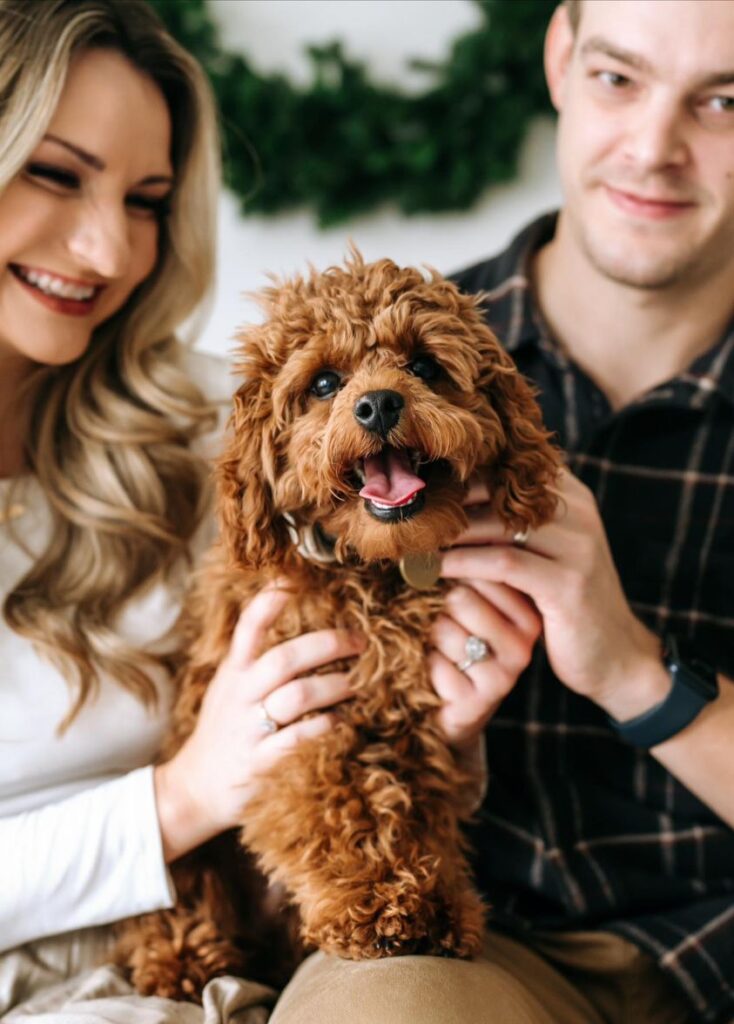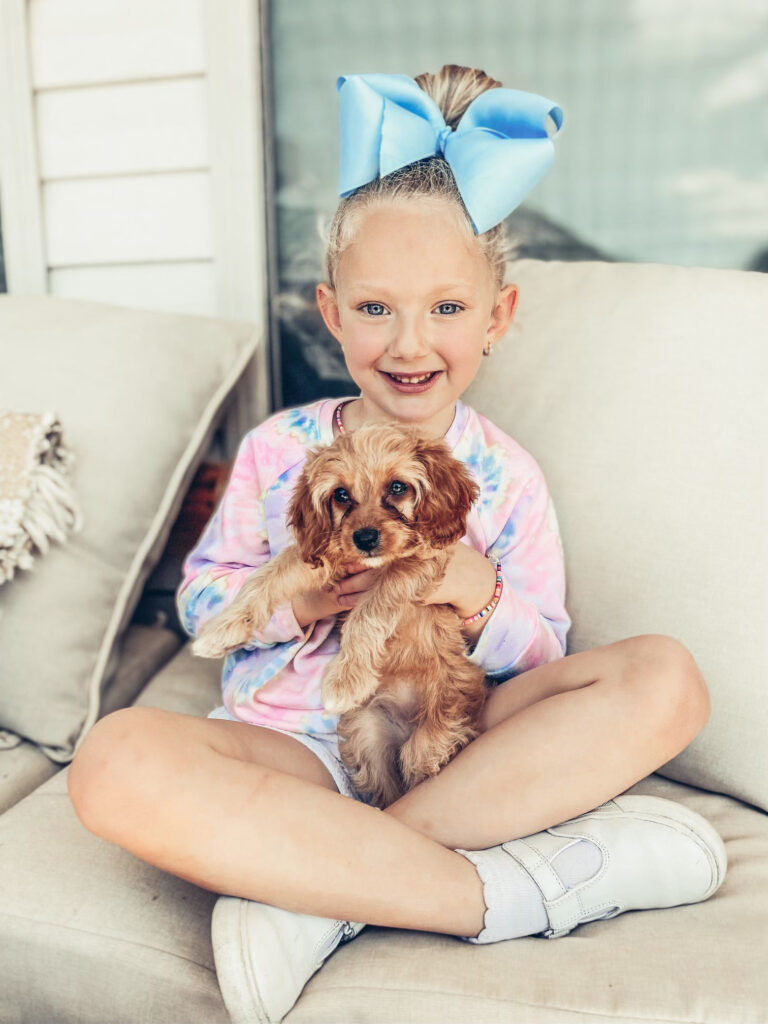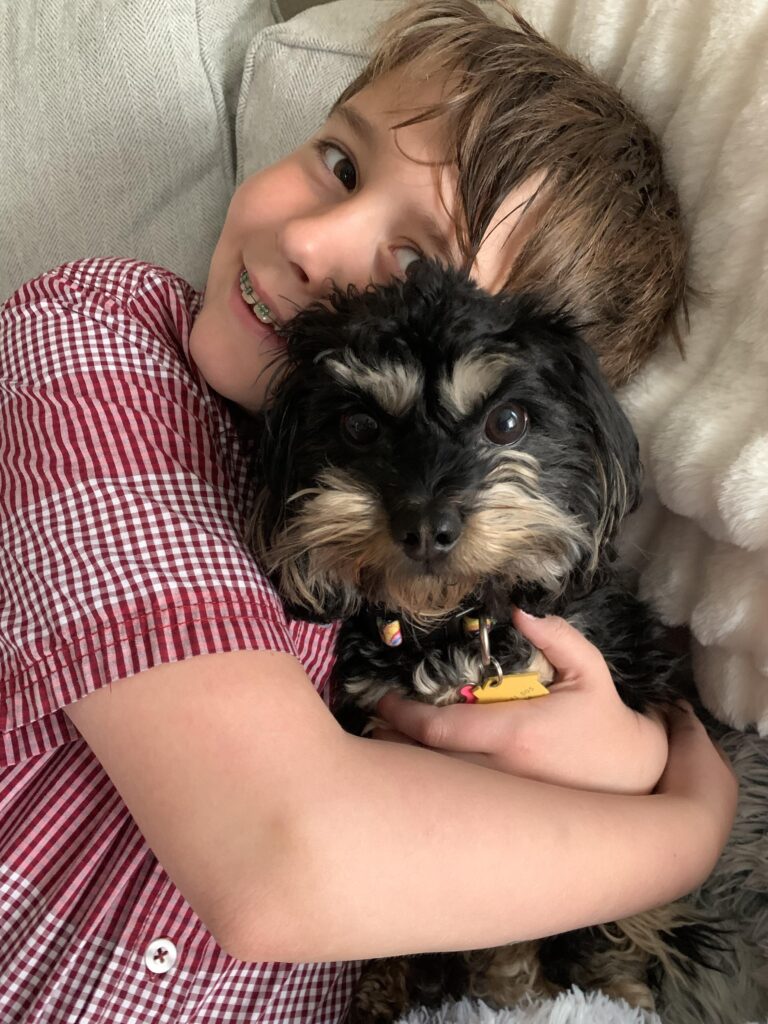Make sure you have the needed supplies when bringing your puppy home, you can see what we recommend on our Must Haves page. This page also includes the food and treats we recommend from the brand Pawtree!
Your puppy will also need to regularly see a veterinarian for care, vaccinations, and preventatives for fleas, ticks, and heartworms.



Preparing your Home
Puppy Proofing:
For a Cavapoo puppy, or any puppy for that matter, anything has a chance to be chewed or played with. To keep your pooch (and your valuables) safe, remove any items that you don’t want damaged or that could harm your puppy.
Examples of these items are: shoes, clothing, house plants, cleaning products, electrical cords and blind cords, among others.
The same should be done for any outside area that your new puppy may have access too! Outdoor hazards can include but aren’t limited to chemicals, gas, tools, and bodies of water.
After making sure everything is “puppy proofed” figure out a location for things such as their food & water bowl and their bed. Choose an area that is easy to access and where a lot of your household activities are; your puppy will want to be in the same area as you!
Also decide where your puppy will sleep at night, whether it be in your bed or a separate area, make sure it’s prepared before bringing your puppy home!
Socializing
It is very important to socialize your Cavapoo from a young age so they can be accustomed to different things. Cavapoos are both friendly and curious, they are happy and want to stay by your side any and everywhere you go! Socialization is simply exposing your puppy to new things. This includes: children and adults, loud or unusual noises (such as a vacuum cleaner), other animals (from dogs and cats to squirrels or birds you might see on a walk), different environments, traveling in the car or otherwise, etc.
If you have children at home, you should talk to them before bringing your puppy home. They need to know that the puppy is fragile and may be scared for many reasons and need to get used to their new environment, so they need to be calm and quiet around their new puppy at first. Tell them at first, they need to pet the puppy gently and not try picking it up yet. Have them sit on the floor and let the puppy approach them, you want to do this at first until the puppy is more comfortable. When your puppy approaches your children, they can pet it and talk to them softly, you can also offer the puppy treats to reward good behavior! If the puppy is reacting well to your children, they can hold them, but puppies are fragile so this should be done while they are sitting down. If your puppy ever seems scared, you should give it some space to calm down and relax before trying again later. Let your children know that it may take some time to get used to them and the new environment.
Training
All dogs thrive on a schedule, especially for potty training, and training from a young age is very important. The most important thing is, no matter what you’re working on, you must stay consistent for your dog to learn. Some basic commands that your dog should know are sit, down, stay, come, heel, leave it, speak, and quiet.
These are all helpful and can help keep your new baby safe. A fantastic example of this is the command “come”. If you have kept up with training and you see your dog running towards a street, they should come to you when you say “come”. If you haven’t kept up with obedience training, you’re left to stand there and watch as your dog walks into a potentially dangerous situation.
Always reward your dog for good behavior and never reward for behavior you don’t want them to do, show them that you are displeased and a great way of doing this is not giving them any attention, whether it be petting them or even looking at them.
Never use their crate as a form of punishment, if you need to use the crate to travel or use it to help potty train, you do not want your new puppy to associate it with being in trouble.
One of the hardest tasks of training your dog is potty training.
First and foremost remember it is best to train your new puppy on pads when they first come home. Remember, your new puppy is not completely vaccinated until they are 16 weeks old. You do not want to risk your puppy getting Parvo virus from going outside.
We do begin puppy pad training here in the nursery. We suggest putting out puppy pads closest to the door where your puppy will eventually go outside to potty. Bring your new puppy to the potty pad every 15-30 minutes at first and say one simple command, “potty,” if they try to walk off just put them back on the pad and say “potty” or whatever your command word may be. It may be tedious at first but before you know it your baby will know exactly what to do. Make sure to reward them with a treat! (We like to use Honey Nut Cheerios!) Remember, when your puppy first comes home they are still a baby and they are unable to hold their bladders for long periods of time.
Once your baby is completely vaccinated you can start opening the door and letting them outside. When you see that your baby is going to the pad open the door and let them outside, use your command word, “potty.” They will learn to start standing by the door or alert you when they need to go out, and you will be able to take the potty pad away. Consistency is KEY with Cavapoos! They are very smart, but they have to have a schedule.
Your new puppy will likely need to potty immediately after they wake up from a nap, or about 15-30 minutes after they eat or drink (of course it could be sooner.)
The most important aspect of knowing when they need to go is supervision. Watch for signs such as sniffing the floor, standing at the door, or walking in circles, if you see this, immediately pick them up and take them to where you want them to do their business.
Grooming
Due to a Cavapoo having a medium to long coat, it is very important to schedule regular grooming appointments, typically every 4-6 weeks. However, it is also important that they are brushed daily, if not brushed they will develop knots, also known as mats. In extreme cases, mats can be very uncomfortable and painful for your cavapoo and groomers will often have to shave them all the way down.
The best brush for Cavapoos would be a slicker/wire brush. Make sure to check out our must haves page – we have linked everything you will need, there!
For nails, most groomers tend to use a Dremel tool rather than normal nail clippers, you can easily cut the quick in your dog’s nails with normal clippers, causing them to bleed. Dremels are nice because they tend to file your dog’s nails and leave them with smooth, rather than jagged edges. You can do this yourself, or have your groomer take care of it for you.
Dogs with floppy ears, such as a Cavapoo, have a heightened risk for ear infections because they don’t get as much air circulation as other breeds who have ears that stand straight up.
Your dog’s ears are very easy to clean, you just need to take some time weekly to squeeze a few drops of dog ear cleaner in to their ears, gently massage the base of your dog’s ears to distribute the solution, and then wipe any earwax or other things away with a cotton ball or dog ear wipes, NEVER stick anything directly into your dog’s ears.
All dogs need their teeth brushed regularly, but this can be a more difficult process as most dogs initially reject it at first. Start with gently putting your finger in their mouth or allowing them to taste the toothpaste you have for them.
After rewarding them with a treat you can move up to a finger brusher for your dog, but start with just a few teeth and then give them a treat afterwards. Slowly get your dog used to the process and they will see it as a normal part of their routine, with some tasty treats as a reward afterwards! Not only will you need to focus on their teeth, but you also need to brush their gums to prevent plaque build-up.
Travel
When you first bring your puppy home, the car ride can be a rather stressful and scary experience for your puppy. Not only is this the first time they’ve been separated from their brothers and sisters, but the unfamiliar sounds and movements can be scary for them, they could even get car sick! Make sure your puppy has gone potty before leaving, then, if the trip is long, make sure to make pit stops for them. This reduces the chances of them having an accident in the car and gives them a little break.
Aside from the initial ride home, there are many things you should know when traveling with your Cavapoo in the future. Depending on the type of travel you plan on doing, you may need different types of carriers. For a car, you may just need a soft carrier, like the one mentioned on our Must Haves page!
You want to make sure that your dog remains still and doesn’t move around the car while you’re driving, you don’t want to risk your baby being injured! If going on a long road trip, every couple of hours you will need to stop so your dog has a chance to go potty and stretch their legs a little. Don’t leave your dog in your car though, if you need to take a break, especially if it is hot outside. If you do, it is best to leave your AC running.
For airline traveling, you need to first find out which airlines allow dogs, depending on where your dog will be, get an appropriate carrier. If you are staying in a hotel with your dog, first call ahead of time to make sure the hotel is pet-friendly. It is best to aim for a room on the first floor, so that way you won’t need to navigate stairs or an elevator when your dog needs to go outside. Some Cavapoos can be afraid of the change of location, but either way, make sure you bring things like their favorite blanket and toys to make sure they’re more comfortable, and that they have plenty of water during your stay.